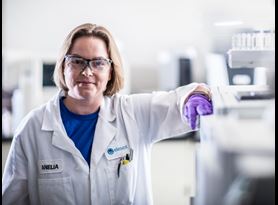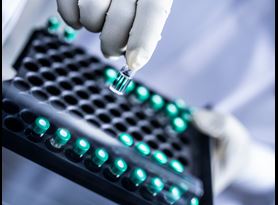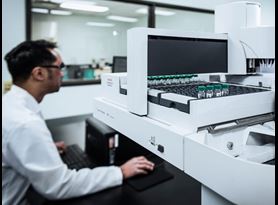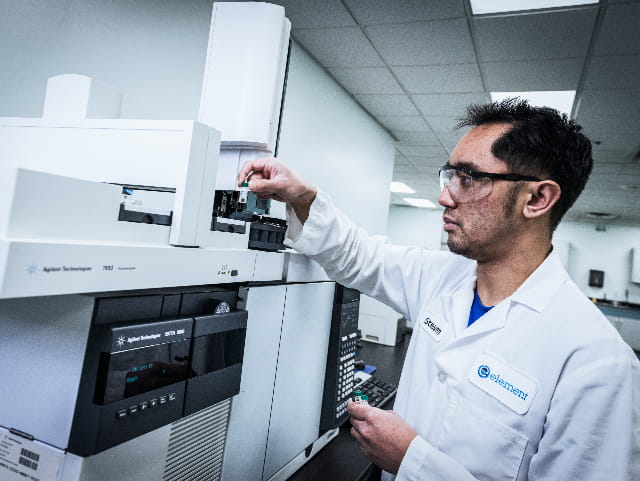Successfully meet the requirements of the FDA premarket tobacco application (PMTA) with Element’s comprehensive FDA-approved harmful and potentially harmful constituents (HPHC) testing services, customized to meet the specific needs of your nicotine product and delivery system.
All manufacturers of new or newly deemed finished tobacco products on the market as of August 8, 2016, are required by the FDA to provide an analysis of any HPHCs as part of their PMTA submission. Our modular, custom approach to HPHC testing has been purposefully designed to enable quick and efficient set-up and reporting that can be tailored to meet your specific needs. To ensure regulatory goals are met, Element’s consultative team of experts continue to refine and optimize our HPHC reporting and guidance to meet FDA and industry expectations.
In addition to our FDA-accredited laboratories equipped with dedicated and specialized instrumentation, our qualified team of dedicated scientists possess a diverse set of technical expertise and have a proven track record of success testing a variety of nicotine and tobacco products, including e-liquids, electronic nicotine delivery systems (ENDS), and a wide range of smokeless tobacco products and alternative nicotine delivery systems (ANDS), including pouches, gums, and lozenges.
Regulatory expectations for HPHC testing
In 2012, a list of 93 HPHCs in tobacco products and tobacco smoke was published by the FDA focusing on chemicals that are linked to the five most serious health effects of tobacco use: cancer, respiratory effects, cardiovascular disease, reproductive complications, and addiction. Further guidance identifying a subset of 20 harmful and potentially harmful constituents (HPHCs) that manufacturers and importers must test for and report to the FDA was issued by the Agency the same year. Element is aware of up to 17 key analytes to test for in new tobacco and nicotine products. Ensure compliance to regulations with our simple and cost-effective testing for all relevant HPHCs, supported by our team of engaged regulatory and scientific experts.
The Element advantage
Efficiently prepare an FDA submission that meets current regulatory expectations and guidance for reporting HPHCs with the support and guidance of our regulatory and scientific experts. Our consultative teams will ensure that you receive a full report complete with the data, accreditation information, and a description of the aerosol generating methodology needed to stay in compliance with industry and regulatory standards. Element’s full-service chemical testing laboratory can perform the e-liquid and ENDS testing needed to meet your regulatory goals.
To learn more about our comprehensive offering of nicotine and PMTA services, including HPHC testing, or to speak with one of our experts,
Learn more

Nicotine, Tobacco, ENDS & ANDS Testing
Element's experts provide efficient and reliable nicotine, tobacco and e-liquid testing of ENDS and ANDS products to help you confidently navigate FDA PMTA.

Article: E&L Studies of Electronic Nicotine Delivery Systems
PMTA guidance specifically addresses ENDS products container closure systems. E&L testing of such packaging components is required by the FDA.

Article: PMTA Perspectives: Legal Vs. Scientific
Attorney Mark Sanchez provides insight into the PMTA submission and filing process for tobacco products.

Article: PMTA Deficiency Letters
Learn about the three phases of FDA PMTA deficiency letters and how to format responses properly.

Nicotine PMTA and TPD2 submissions
Ensure your products are as safe as possible and stay ahead of regulation. Element’s labs provide comprehensive testing services for e-cigarettes and e-liquids, supporting submission of premarket tobacco application (PMTA) and TPD2 and UK TRPR for electronic nicotine delivery systems (ENDS).

